Sri Lanka's Galle cricket stadium risks being demolished
- Published
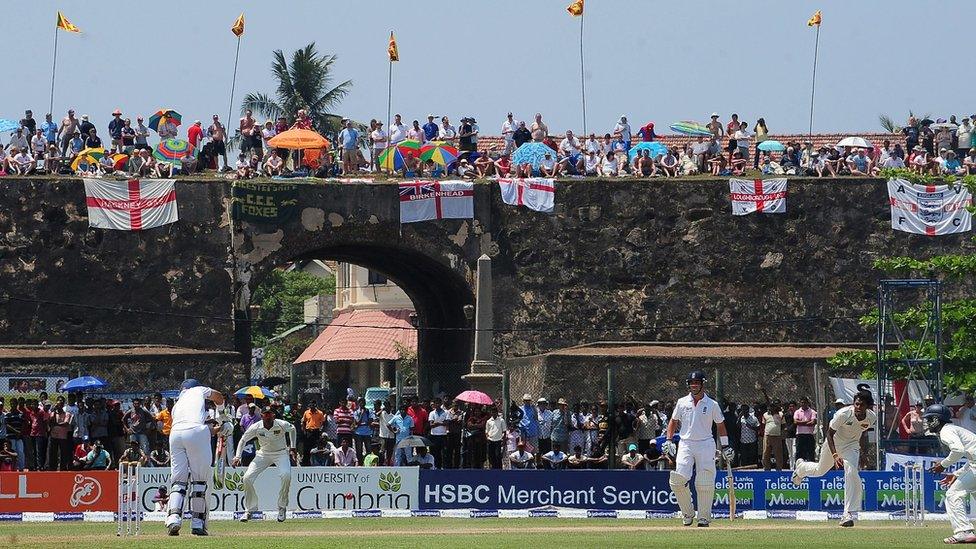
England fans watch their team play Sri Lanka at Galle Stadium in 2012
One of the world's most picturesque cricket stadiums is at risk of being demolished because it threatens the heritage status of a nearby fort.
Galle cricket stadium, in southern Sri Lanka, is famed for its stunning views of the Indian Ocean.
But it is the 17th Century Dutch fort which looms over the ground that has put it in danger.
Sri Lanka's cultural affairs minister Wijeyadasa Rakapakshe said the fort risks losing Unesco World Heritage status because of unauthorised construction nearby, including the 500-seat pavilion stand which was rebuilt after the ground was devastated by the 2004 tsunami.

Sri Lanka have won most of the matches they have played here since 1998
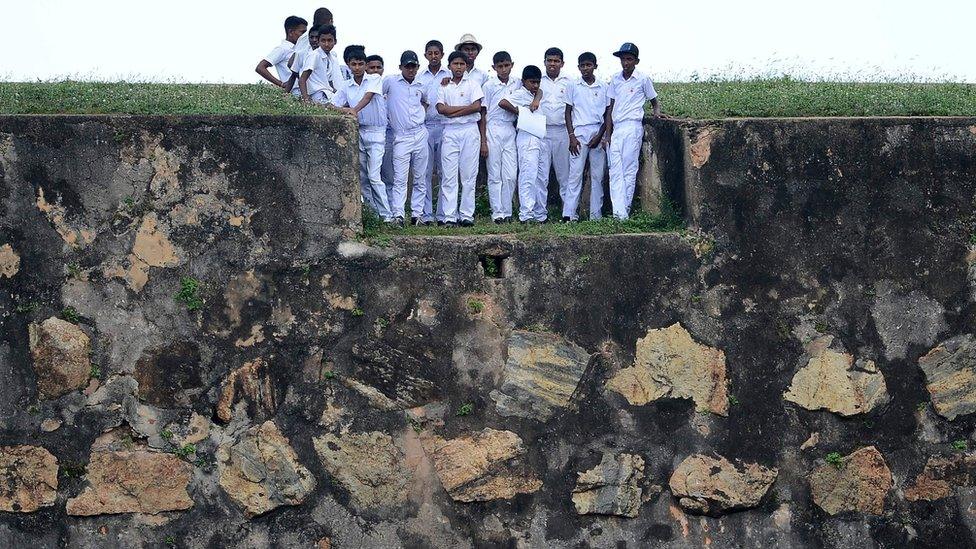
Standing on the fort affords a good view of the cricket below
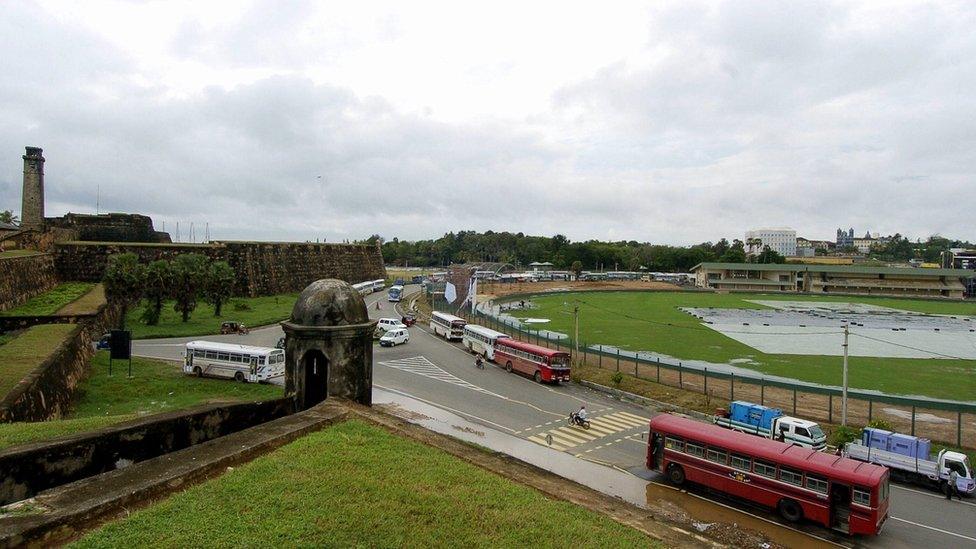
England are due to play here in November, and may end up being the last team to do so
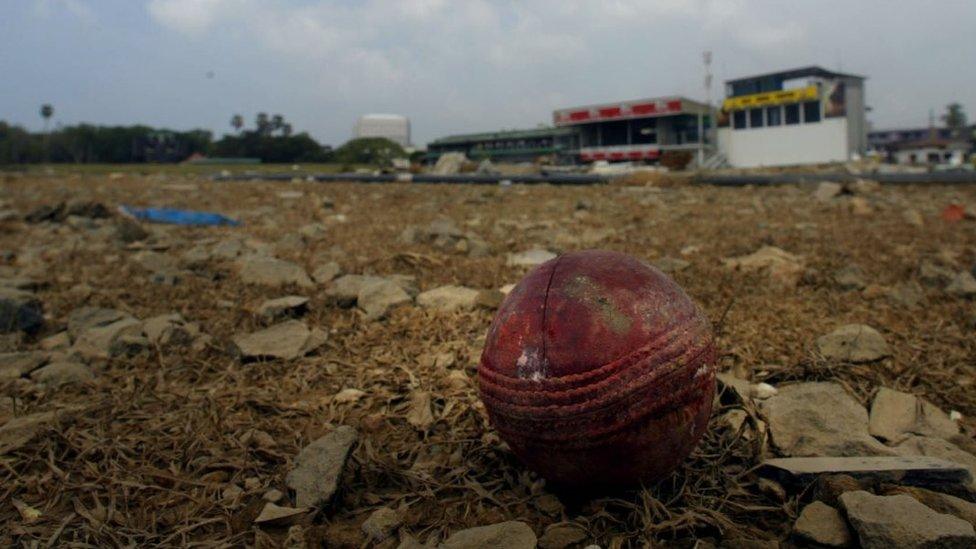
The stadium was devastated by the 2004 Boxing Day tsunami, which killed at least 31,000 people in Sri Lanka
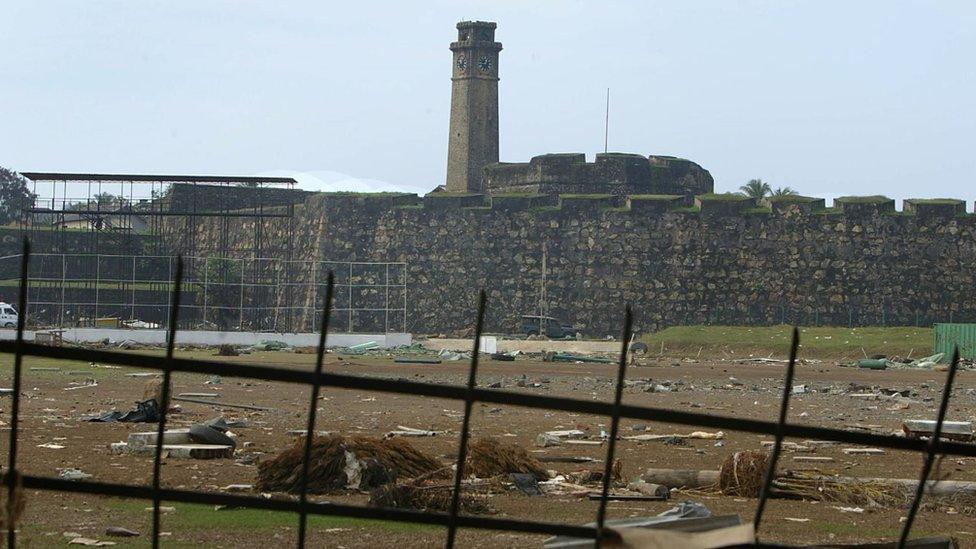
It was rebuilt afterwards - but the new pavilion blocks the view of the fort from the city's main road
Mr Rakapakshe said the government had been left with a choice: either remain on the World Heritage list, or keep the pavilion.
However, Arjuna Ranatunga - who led Sri Lanka to victory in the 1996 World Cup as captain - has suggested a compromise: demolish the current stand, and put up temporary seating when Test matches were played.
- Published10 April 2018

- Attribution
- Published15 March 2018

- Attribution
- Published22 June 2018

- Attribution
- Published19 June 2018
